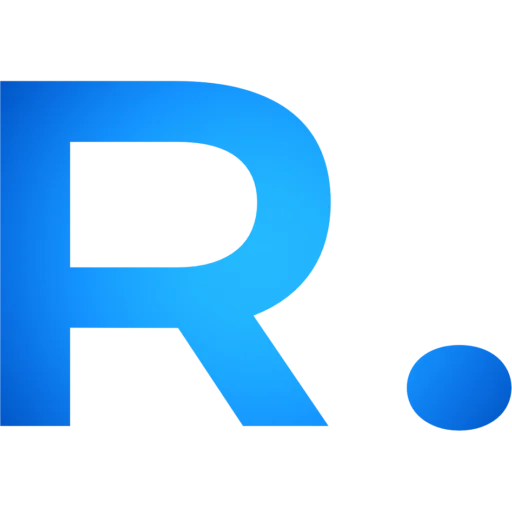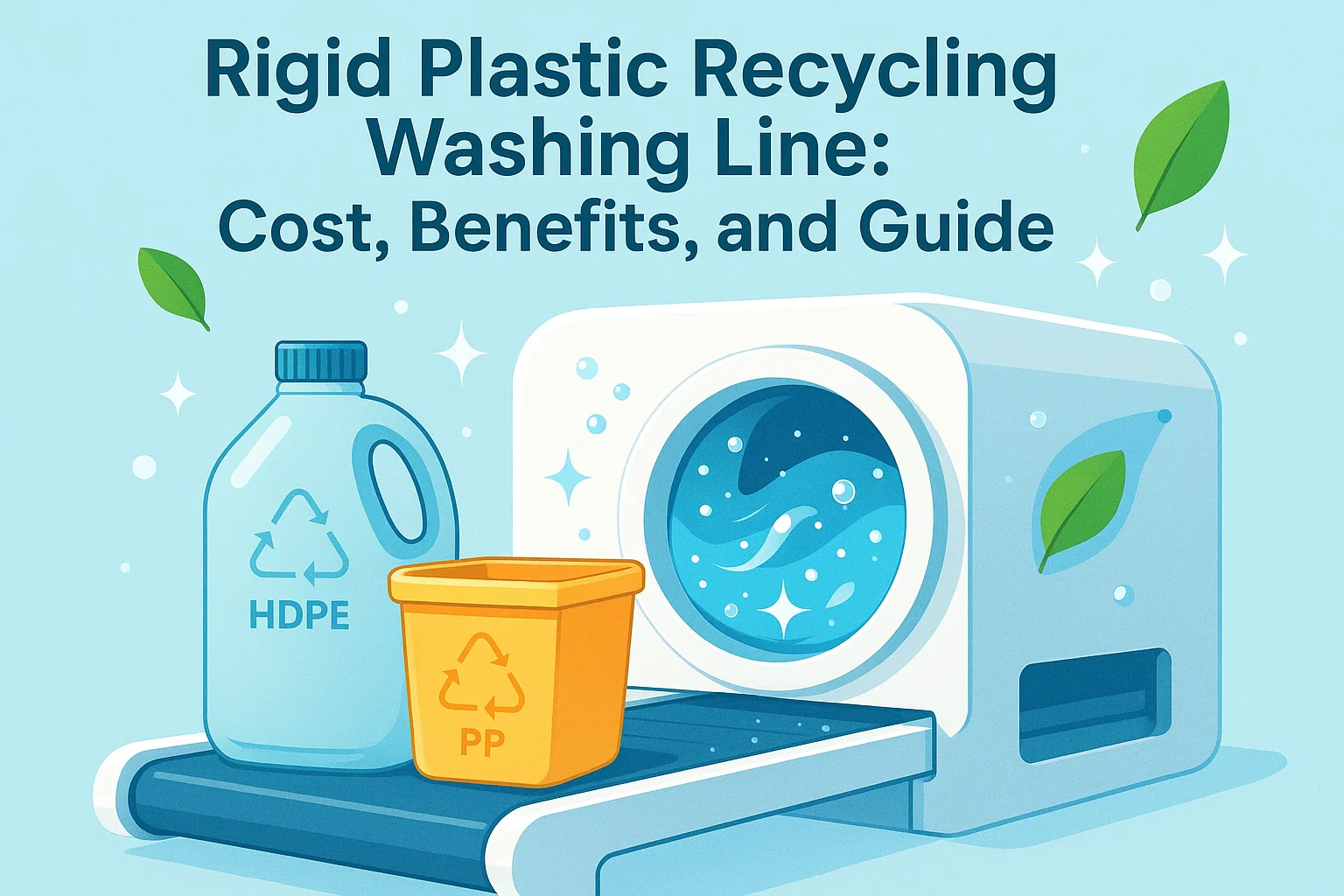지속가능성이 전 세계적으로 주목받으면서 플라스틱 재활용 산업이 빠르게 성장하고 있습니다. 플라스틱 폐기물을 책임감 있고 수익성 있게 처리하려는 기업에게는 단단한 플라스틱 재활용 세척 줄 중요한 결정입니다. 하지만 비용은 얼마나 들까요? 그리고 구매 및 운영 과정에서 어떤 점을 예상해야 할까요? 이 종합 가이드는 장비 선택부터 운영 비용까지 필요한 모든 정보를 제공하여 현명한 투자를 할 수 있도록 도와드립니다.
딱딱한 플라스틱 세탁줄이란?
에이 단단한 플라스틱 세탁줄 HDPE(고밀도 폴리에틸렌) 및 PP(폴리프로필렌)와 같은 경질 플라스틱 소재를 세척하고 처리하도록 설계된 기계들의 통합 시스템입니다. 이러한 플라스틱은 병, 상자, 자동차 부품 등에 흔히 사용됩니다. 세척 라인의 주요 기능은 오염 물질을 제거하고 플라스틱을 새로운 제품으로 재활용할 수 있도록 준비하는 것입니다. 일반적인 구성 요소로는 파쇄기, 세척 탱크, 마찰 세척기, 부유 탱크, 건조 장치 등이 있습니다.
이러한 시스템의 기술에 대해 자세히 알아보려면 여기를 클릭하세요. 단단한 플라스틱 세탁줄 페이지.
강성 플라스틱 세탁줄 비용에 영향을 미치는 주요 요인
단단한 플라스틱 빨래줄의 가격에는 여러 가지 변수가 영향을 미칩니다. 이러한 요소들을 이해하면 필요와 예산에 맞는 적절한 빨래줄을 선택하는 데 도움이 될 것입니다.
1. 장비 품질
고품질 기계는 효율성, 신뢰성, 그리고 수명에 대한 투자입니다. 유럽산 제품은 뛰어난 제작 품질로 여겨지지만, 전 세계적으로 명성 있는 제조업체에서 훌륭한 제품들을 구입할 수 있습니다. 초기 비용이 높을수록 유지 보수 비용은 낮아지고 장기적으로는 성능이 향상된다는 점을 기억하세요.
2. 용량
세탁 라인은 처리량에 따라 크기가 결정되며, 일반적으로 시간당 킬로그램(kg/hr) 단위로 측정합니다. 스타트업이나 소규모 사업체에 적합한 소형 시스템은 시간당 500kg을 처리할 수 있습니다. 대규모 작업에는 시간당 2,000kg 이상의 처리량이 필요할 수 있습니다. 처리량이 많을수록 가격이 높아집니다.
3. 사용자 정의
모든 재활용 작업은 고유합니다. 맞춤형 세척 라인은 특정 유형의 플라스틱을 처리하거나 다양한 수준의 오염을 처리하도록 맞춤 제작될 수 있습니다. 맞춤 제작은 비용을 증가시키지만, 시스템이 고객의 정확한 요구 사항을 충족하도록 보장합니다.
4. 추가 기능
자동 모니터링, 에너지 효율적인 모터, 물 재활용 시스템과 같은 고급 기능은 초기 투자 비용을 늘리는 동시에 지속적인 운영 비용을 절감할 수 있습니다. 이러한 개선 사항은 효율성을 높이고 낭비를 줄이며 장기적으로 상당한 비용 절감 효과를 제공할 수 있습니다.
강성 플라스틱 세탁줄의 종류
기업마다 필요한 솔루션이 다릅니다. 가장 일반적인 유형을 살펴보겠습니다.
기본 강성 플라스틱 세탁줄
초보자에게 적합한 이 장비는 일반적으로 분쇄기, 세척 탱크, 마찰 세척기, 건조기를 포함합니다. 효과적인 세척 및 처리에 필요한 필수 단계를 저렴한 가격으로 제공합니다.
고급 강성 플라스틱 세척 라인
고급 라인은 고순도 재활용 산출물을 요구하는 작업을 위해 완고한 오염을 위한 고온 세척기나 2차 세척 탱크 등 추가적인 세척 및 건조 단계를 제공합니다.
맞춤형 강성 플라스틱 세탁줄
완벽하게 맞춤 제작된 라인은 특수 오염 물질 제거 또는 흔하지 않은 경질 플라스틱 가공과 같은 고유한 과제를 해결하도록 설계되었습니다. 이러한 라인에는 특수 파쇄기, 통합 수처리 시스템 또는 향상된 자동화 기능이 탑재되는 경우가 많습니다.
가격 범위: 얼마를 예상해야 하나요?
가격은 구성에 따라 다르지만, 일반적인 가이드는 다음과 같습니다.
- 기본 강성 플라스틱 세탁줄: $50,000 – $150,000
- 고급 강성 플라스틱 세척 라인: $150,000 – $300,000
- 맞춤형 강성 플라스틱 세탁줄: $300,000 이상
이 수치는 공급업체, 지역 및 특정 옵션에 따라 변동될 수 있습니다. 투자 비용이 상당해 보일 수 있지만, 많은 기업은 장기적인 이점과 투자 수익률이 그만한 가치가 있다고 생각합니다.
지속적인 운영 비용
초기 구매 외에 다음과 같은 반복적인 비용을 고려하세요.
에너지 소비
세탁조를 작동하려면 상당한 에너지가 필요합니다. 에너지 효율이 높은 모델은 구매 가격이 높을 수 있지만, 월별 공과금을 절감하고 환경적 이점을 제공할 수 있습니다.
유지
정기적인 유지 관리는 가동 시간을 극대화하고 장비 수명을 연장하는 데 중요합니다. 정기적인 검사, 부품 교체, 그리고 비정기적인 전문 정비를 계획하십시오.
노동
숙련된 작업자는 재활용 라인의 효율적인 운영에 필수적입니다. 직원 교육과 효율적인 작업 흐름 관리에 투자하면 인건비를 효율적으로 관리하는 데 도움이 됩니다.
폐기물 처리
오염 물질과 재활용 불가 물품을 적절하게 처리하고 폐기하는 것은 규제 및 환경적 측면에서 필수적입니다. 재활용 사업 예산을 책정할 때 이러한 비용을 고려하십시오.
투자 수익률(ROI) 극대화
에이 단단한 플라스틱 세탁줄 적절한 전략을 사용하면 높은 ROI를 창출할 수 있습니다. 다음은 몇 가지 모범 사례입니다.
시장 분석
재활용 경질 플라스틱에 대한 지역 수요를 조사하세요. 구매자와 관계를 구축하고 계약을 체결하면 안정적인 수익 흐름을 확보할 수 있습니다.
품질 관리
일관되고 고품질의 결과물을 제공하면 고객의 신뢰와 충성도를 높일 수 있습니다. 프로세스의 모든 단계에서 엄격한 품질 관리를 시행하세요.
효율적인 운영
폐기물 최소화와 에너지 효율 극대화를 위해 최적화하세요. 지속적인 프로세스 개선을 통해 생산성과 수익을 증대할 수 있습니다.
환경 영향
회사의 긍정적인 환경적 기여를 홍보하면 브랜드가 강화되고 환경을 의식하는 고객과 파트너에게 판매 기회를 얻을 수 있습니다.
자세히 살펴보기: 단단한 플라스틱 세척 과정
이러한 시스템이 플라스틱 폐기물을 어떻게 변환하는지 단계별로 살펴보겠습니다.
1. 파쇄
플라스틱 폐기물을 작은 조각으로 잘게 자르면 청소와 처리가 더 쉬워집니다.
2. 세척
탱크, 마찰 세척기, 고온 세척기 등 여러 세척 단계를 거쳐 라벨, 먼지, 오일을 제거하여 순수하고 오염 물질이 없는 플레이크를 보장합니다.
3. 건조
강력한 건조 장치는 습기를 줄여 플라스틱 조각을 추가 가공이나 직접 판매에 적합하게 준비합니다.
4. 정렬
고급 라인에는 플라스틱 종류나 색상에 따른 자동 분류 기능이 포함되어 있어 재활용 제품의 품질과 시장 가치를 높여줍니다.
5. 펠렛화(선택 사항)
일부 작업에서는 펠릿화 단계를 추가하여 깨끗한 플레이크를 균일한 펠릿으로 만들어 더 폭넓은 시장에 어필합니다.
자주 묻는 질문
질문: 어떤 종류의 플라스틱을 가공할 수 있나요?
에이: 대부분의 라인은 HDPE, PP 및 상자, 병, 자동차 부품과 같은 기타 단단한 플라스틱을 위해 설계되었습니다.
질문: 설정하는 데 얼마나 걸리나요?
에이: 설치 시간은 복잡성에 따라 다르지만, 주문부터 운영 준비가 될 때까지 몇 주에서 몇 달이 걸릴 것으로 예상하세요.
질문: 어떤 규정을 고려해야 합니까?
에이: 지역 및 국제 환경 규정을 준수하는 것은 필수적이며, 특히 폐기물 처리 및 에너지 사용과 관련된 규정은 더욱 그렇습니다.
질문: 기존 라인을 업그레이드할 수 있나요?
에이: 많은 제조업체가 효율성을 개선하고, 용량을 늘리고, 새로운 규정을 충족하기 위해 업그레이드 키트를 제공합니다.
질문: 세탁줄의 수명은 얼마나 되나요?
에이: 적절하게 관리하면 고품질 파이프라인은 10년 이상 효율적으로 운영될 수 있습니다.
질문: 자금 조달 옵션이 있나요?
에이: 네! 많은 공급업체가 이러한 시스템의 접근성을 높이기 위해 자금 지원을 제공합니다.
결론
에이 단단한 플라스틱 재활용 세척 줄 지속 가능성, 수익성, 규정 준수에 중점을 둔 모든 기업을 위한 현명한 투자입니다. 비용, 운영 요구 사항, 그리고 잠재적 ROI에 영향을 미치는 요소들을 이해함으로써, 귀사의 필요에 맞는 최적의 시스템을 선택하고 장기적인 성공을 위한 발판을 마련할 수 있습니다. 다음 단계로 나아갈 준비가 되었거나 전문가의 조언이 필요하시다면, 저희를 살펴보세요. 단단한 플라스틱 세탁대 솔루션 오늘.



